There is a spiritual war. Black Anna-Aloise. Part of 2
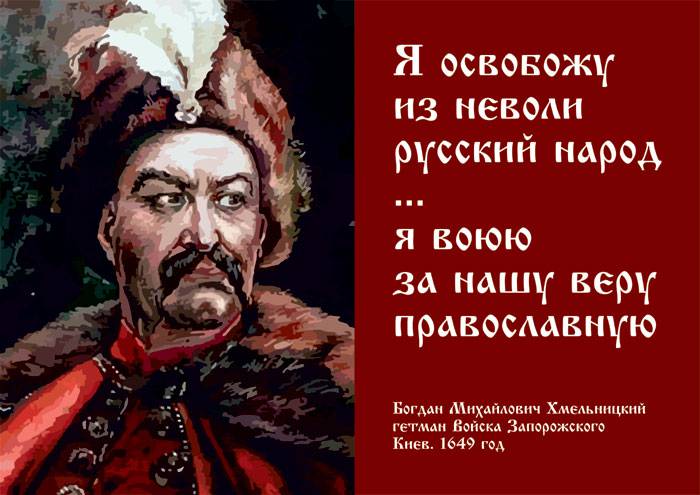
The Uniate Church pledged to submit to the Pope and recognize his supreme authority in solving all controversial theological issues. Finally, under the terms of the union, the interests of the Uniate clergy were envisaged: it was said about his exemption from taxes, about the building of the Uniate bishops to the rank of Polish senators, and so on.
But the fight broke out about the calendar. Stephen Batory also tried to introduce the Gregorian calendar into Orthodox use. In the new, especially complicated conditions, the introduction of this calendar only inflamed political passions.
The acuteness, which inevitably differed then the religious issue, especially increased after the introduction of the church union.
Especially important was the position of the Kiev governor, Prince Konstantin Konstantinovich Ostrozhsky. By origin Ukrainian, he was an enemy of the Russian state. Against Russia, he fought at the head of his regiments in the troops of the Polish king - a worthy son of his father, Prince Konstantin Ivanovich Ostrog. He once was also known as the patron saint of Orthodoxy in Lithuania, but more than once laid bare weapon against Russian troops.
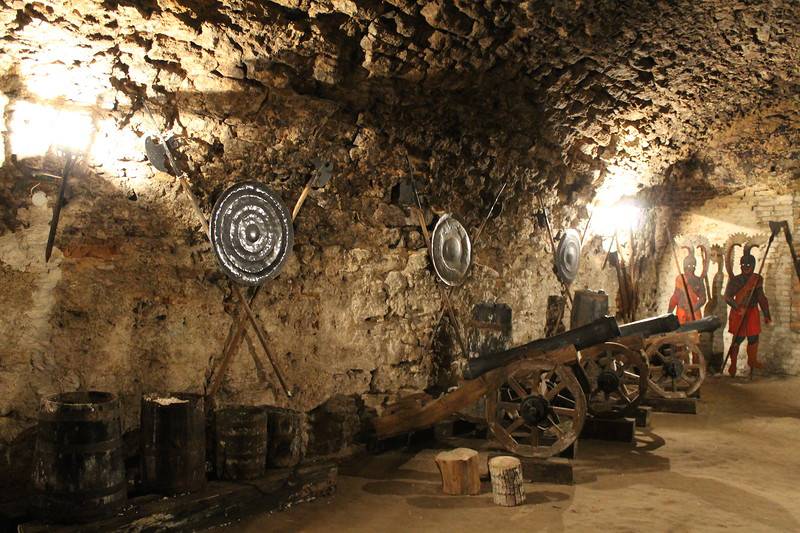
In our chronicles there is a thin glory about Konstantin Ivanovich - he is called the “enemy of God” for his perjury. The fact is that in 1500, he was captured by Russian troops, after a few years he swore allegiance to the tsar, and for this he was not only relieved of his supervision, but also received an important government post. But, being on business on the Lithuanian border, Konstantin Ivanovich broke the oath and military duty, moved to Lithuania, resumed service to the Polish king, and again and again led thousands of armies against Russia. After a successful major operation of Ostrozhsky near Orsha against the Russian troops, the king, in a sign of great appreciation, gave him a magnificent triumph on an ancient Roman model - a solemn return to Vilna at the head of his army and accompanied by a crowd of Russian prisoners. According to Karamzin, Ostrozhsky "glorified God in the Russian language for the extermination of the Russians" (Nikolai Karamzin, "History Russian states ", volume VII, p. 68).
In the spirit of hostility towards Russia, he raised his son, about which the Polish historian Heidenstein wrote: in 1579, during the siege by Batory of Polotsk, "among the volunteers were Konstantin, son of Ostroh Prince Constantine, who arrived with the best riders." In the same year, Konstantin Ivanovich, together with his son and several thousand troops, came out against Russia. Heidenstein reports that they "devastated the country and brought horror everywhere," besieged Chernihiv, "plundered the surrounding places" and "ravaged the entire Seversk land."
Grown up Konstantin Konstantinovich was wounded by traitors fleeing from Russia - it’s enough to name at least Prince Andrei Kurbsky: he not only sheltered a traitor to his homeland, but after Kurbsky’s death, became the guardian of his family. On the lands of Ostrozhsky, Gregory Otrepiev, the future False Dmitry I.
Janusz of Ostrog, the son of Konstantin Konstantinovich, wanted to make Stefan Batory his ambassador in Rome. Horace Spannokki, secretary of the papal nuncio in Poland, in his essay on the Polish “kingdomless” 1587 of the year (after the death of Batory) considered in detail the chances of Konstantin Konstantinovich and Janusz Ostrozhsky to receive the Polish royal throne. Spannokki believed that the old Ostrog is “the richest and most powerful pan in the whole kingdom.” And that was apparently true: after the death of his successor Janusz, in addition to innumerable property, there remained money 600 000 ducats, 400 000 thalers and on PLNS 29 000 zloty different different coins. Even in the treasury of the Polish kings did not always bring that kind of money.
At the beginning of the 90-s of the XVI century, before the introduction of the union, a peasant and Cossack uprising led by Kosinsky took place on the lands of Ostrog. He called for the reunification of Ukraine with Russia. By order of Ostrozhsky, his son Janusz brutally suppressed the uprising.
The granddaughter of old Konstantin Konstantinovich Ostrozhsky did not lag behind her own business. The excesses of Anna-Alois captured historians. Her father Alexander was the second son of Ostrog and adopted the Orthodox faith.
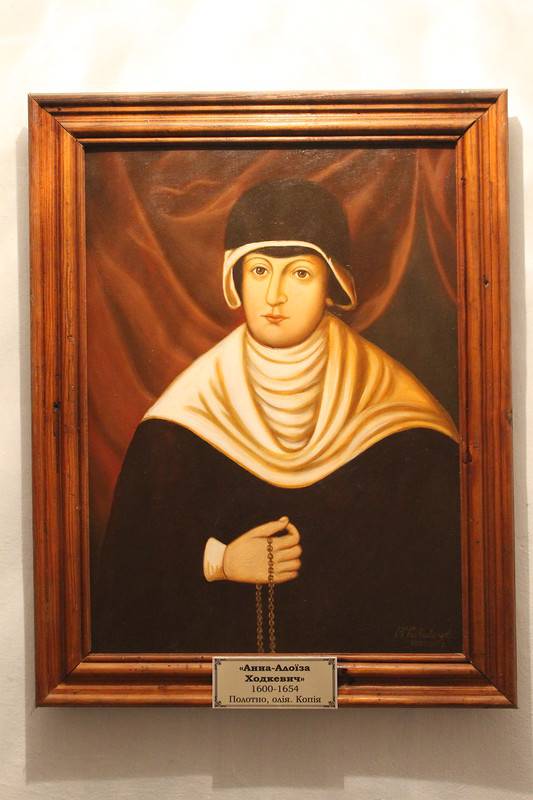
In Yaroslavl, she presented one of the churches to the Jesuit college, and in Ostrog she also gave the Jesuits complete will, closed Russian schools there and founded a large Jesuit college. And then the seminary. The Ostrog chronicler in 1636 reported that, seeing the reluctance of local citizens to join the union, she took property and land from Orthodox monasteries. Once she came at night with her Jesuits to the church, where thirty-four years before her father had been buried, and ordered her bones to be taken out of the coffin. Then came the next comedy. One Jesuit asked: "Alexander, why did you come here?" Another Jesuit, hiding behind the coffin, answered instead of the deceased: "I am looking for salvation." “Why didn’t you search for it before?” - “Because I didn’t know that Roman faith was the best faith.”
After that, the Jesuits christened the bones in their faith and renamed the deceased Stanislav.
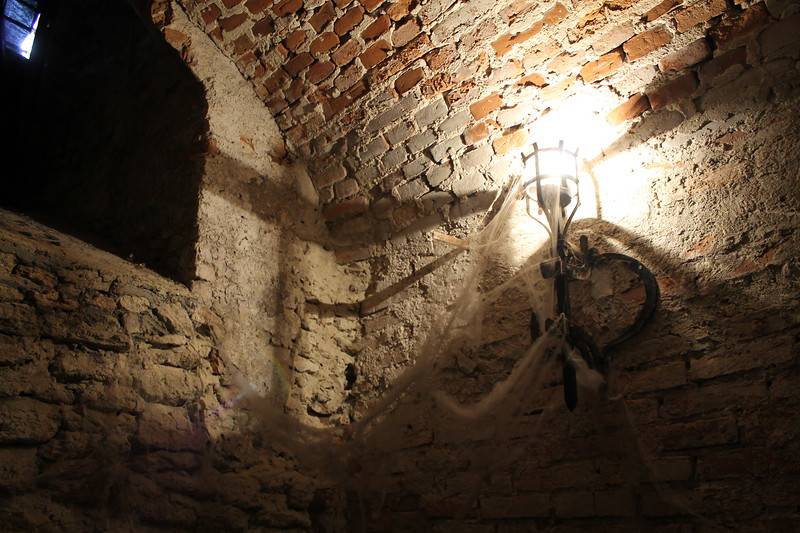
Ukrainian Orthodox citizens reacted very strongly to such antics. In the fierce hatred of them, Anna-Alois allowed herself to commit new crimes. Once she was in a carriage harnessed with six horses, she deliberately crashed into an Orthodox religious procession on a bridge. There were wounded and dead. The provoked townspeople entered into a fight with her haiduk. Then the massacre began: “There was a trial,” the chronicler writes, “and tortured, others could not stand, died in agony, and were thrown out of town for the dogs, banned and buried, only in this way — they were buried in sand without coffins” (Oleg Levitsky, “ Anna-Aloise, Princess Ostrozhskaya ”,“ Kievan Antiquity ”, 1883 Year, # XXUMX).
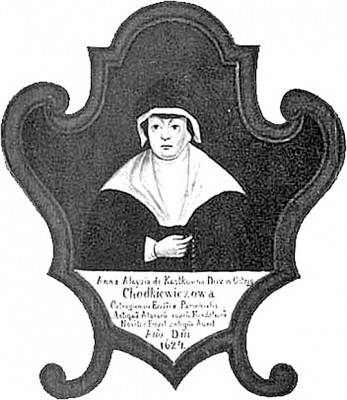
According to another version, Anna-Aloiza drove her carriage around the Easter eggs put up by the townspeople on the bridge and thereby provoked a riot and a fight.
She died in one of her estates, fleeing persecution from the Cossacks of Bogdan Khmelnitsky. But the ashes did not find rest for a long time: it was re-buried several times, and in the 18th century, after the annexation of the Right Bank to Russia, the Jesuit monastery fell into decay, the vault was plundered by vagrants and beggars, and the bones of Princess Ostrog were thrown out of a copper coffin.
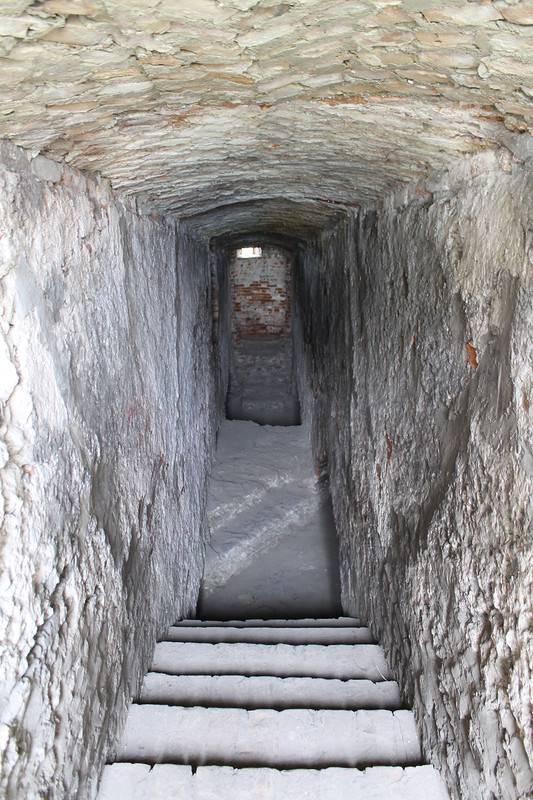
Gradually, the surname and name of the princess was erased from people's memory, but the legend about the mistress, who rode the wheels over the Passover, remained alive and was punished for it by eternal wandering.
In 1649, Bohdan Khmelnytsky told the Polish king what solution the question of religion requires the Cossacks: “First, we ask that there be no bondage that the Russian people in their ancient Greek religion suffer from the union, that is, that now as it was from ancient times, Russia was one Greek religion, so that the Russian hierarchy and all churches remained inviolable everywhere - in Poland and in Lithuania. That the name of the union was not, but only the faith of the Greek and Roman, as it was before in Russia and in Poland; and their graces are the spiritual authorities who want to remain in the Roman Catholic faith, let them remain in good health, just to return to Russia the cathedral ancient Greek churches. ”
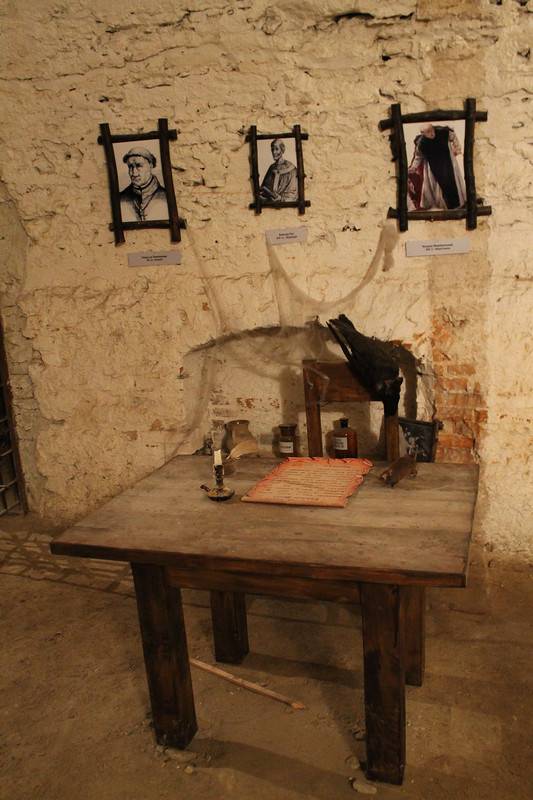
Located in Poland representative of the Pope Torres in his diary 1 January 1650 years vainly hoped that the Cossacks "curb their worthy curse extreme and more moderate its insolent demands" ( "Reports of the papal nuncio John Torres, Archbishop of Adrianople, on the events in Poland during the uprising Bogdan Khmelnitsky ", Kiev, 1944 year, p. 81).
The Polish government had no intention to meet the demands of the Cossacks. Among other considerations, this is easily explained by a well-known fact: the secular Jesuit Jan-Casimir was the king of Poland (1648-1669 years of rule).
But the most sober politicians from the government camp were still anxiously watching what was happening in the world of the clash of religions. Thus, one and a half years before the death of Bishop Josaphat Kuntsevich, the Lithuanian Chancellor Lev Sapega gave him a sharp reprimand in his letter for violence against the Orthodox: “Do not expose us to national hatred, but to your own obvious danger and universal criticism. If we further constrain their religion, then inevitable divisions in society will occur. We do not want union to completely ruin us (K. Govorsky, “Josaphat Kuntsevich - Polotsk Uniate Archbishop”, p. 27-29). Meanwhile, Sapieha himself supported the union: at the Brest Cathedral of 1596, he was one of the chairmen as a “royal commissioner” along with Scarga and other representatives of the Catholic camp)
The Uniate Church became one of the centers of anti-Russian propaganda and espionage - especially after the 1654 year, thanks to the constant help and support of the Russian state, the centuries-old struggle of the Ukrainian people against foreign enslavers ended with its reunification with the Russian people in a single Russian state.
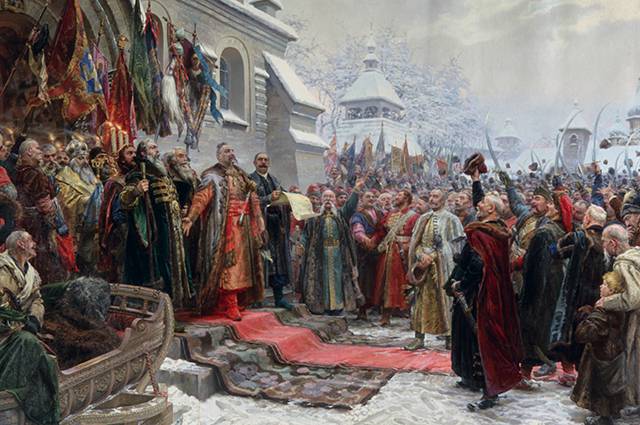
In the autumn of 1682, in connection with the Moscow uprising of the archers, the Polish government secretly distributed in Ukraine "pretty sheets" - proclamations aimed against Russia and designed to tear Ukraine away from it. Reporting this to tsars Ivan and Peter, hetman Samoilovich added that “the bishop of Lviv’s Shumlyansky sent a little apostle of our Russian Orthodox faith to the Little Russia, and sent with them four chernovets as his henchmen, trying to induce this people to confusion” (V.Z. Jincharadze, “Fighting Foreign Spying in Russia in the 17th Century,” Historical Notes, No. XXUMX, M., 39 Year, p. 1952).
Joseph Shumlyansky was the archbishop of the Uniate Church and used every opportunity to try to achieve his dream - the rejection of Ukraine from Russia. Having failed to achieve this in the days of the Streltsy insurgency, he later pinned his hopes on the Ukrainian hetman Ivan Mazepa, incited him to revolt against Russia and promised Polish aid.
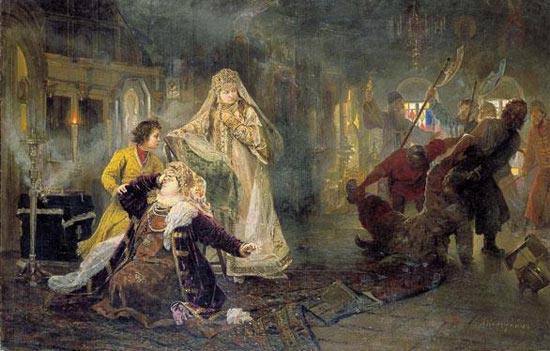
Shumlyansky, the more he relied on Mazepa, that he was brought up in Poland in a Jesuit school (V.E. Shute, “Treason of Mazepa”, “Historical Notes”, No.31, M., 1950 year). As you know, Mazepa betrayed his people.
The traitor Mazepa was in union not only with the Uniate hierarchs: he knew how to get along well with the Catholic, who expected great betrayal of his treason for the papal church. In this regard, he was a worthy predecessor of the later traitors - Petlyura and Bandera.
In the 1708 year, after the crime of Mazepa opened, the Russian military intelligence found out, among other things, that “some Ksenz, the rector of Yezuwitsky from the town of Polish Vinnitsa, often visited Mazepa and, in great confidentiality with him, and tea, he has great secrets ”(“ Letters and Papers of Emperor Peter the Great ”, Vol. VIII, Issue 2, M., 1951 Year, p. 943). Intelligence denounced the truth: it was a Jesuit Zelensky. Mazepa used him as a liaison in his treacherous relations with the Polish and Swedish kings.
Jesuits in espionage zeal went at all. In the 1709 year, when Peter I, who was in Poland, summoned his jester Udder from Russia, they intercepted the latter on the way, hoping to extort something. They could not hide it. A letter was preserved in which Peter ordered the guilty "Ezuvits in their monastery to take strong guard while they give Udder" ("Letters and papers of Emperor Peter the Great", vol. IX, issue 1, M., 1950 year, p. 415).
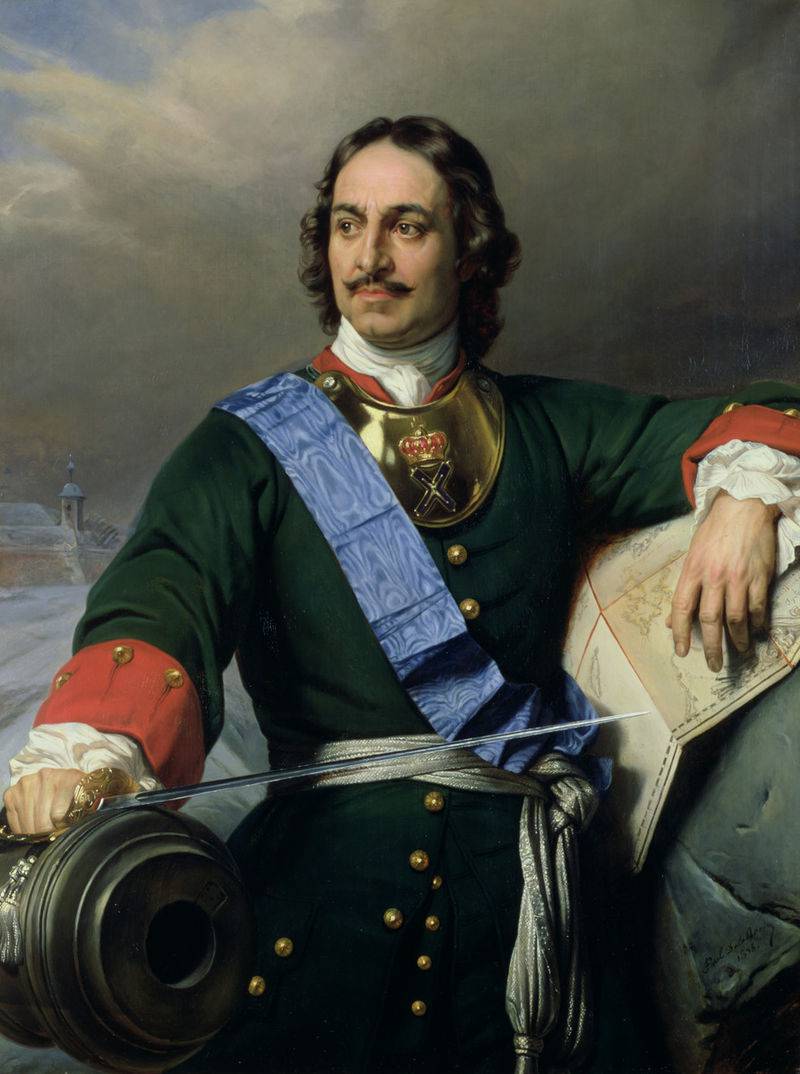
The Swedish government during the Northern War, wanting to restore the Ukrainians against Russia, claimed in its propaganda that Peter I “had already been interpreting the Roman file for a long time, and, having eradicated the Greek faith, he conducted his Roman state. On the cob, already in Moscow, it is known where the Jesuits have been given the power of the school and the churches of the Foundation (founded). ”
The king was quite concerned about this lie. In his letter to the Ukrainian people from February 3 of 1709, he found it necessary to make a very energetic refutation.
The historical “cradle” every time, swinging up and down, brings new facts and new testimonies in its cradle.
After 1918, German Catholic theologian Gruntrup, in a book published in 1927, wrote: “The Apostolic Throne views the Ukrainian church as part of a big church policy as a corridor through which he hopes to gain access to the Orthodox Church. Ukrainians can only justify this task of conquering the Orthodox Church if the peculiarity of their religious rite and their way of life is strengthened. Therefore, we should expect from Rome, as far as possible, assistance and all kinds of assistance in the development of Ukrainian churchhood ”(MM Sheiman,“ The Vatican between the Two World Wars ”, M., 1948 year, p. 49-50).
Fearing the spread of communist ideas, Bishop Khomyshin asked the Polish government to close all Ukrainian reading rooms and other educational institutions.
After the reunification of the Western Ukrainian lands with the Ukrainian SSR in 1939, the situation became aggravated.
The ending should ...
Information